Publication Information
Frequency: Continuous
Format: PDF and HTML
Versions: Online (Open Access)
Year first Published: 2019
Language: English
| Journal Menu |
| Editorial Board |
| Reviewer Board |
| Articles |
| Open Access |
| Special Issue Proposals |
| Guidelines for Authors |
| Guidelines for Editors |
| Guidelines for Reviewers |
| Membership |
| Fee and Guidelines |
 |
Utilization of Minor Forest Products of the Sundarbans in Bangladesh
Md. Akramul Islam1, 3*, Arifa Sharmin2, Rahul Biswas3, Tanmoy Dey1, 3, Bichitra Kumar Bachar1, 3, Md. Najmus Sayadat pitol1, 3
1Research Officer, Bangladesh Forest Research Institute; Ministry of Environment, Forest and Climate Change; Bangladesh.
2Professor, Forestry and Wood Technology Discipline, Khulna University, Khulna-9208, Bangladesh.
3Forestry and Wood Technology Discipline, Khulna University, Khulna-9208, Bangladesh.
Received Date: July 15, 2020; Accepted Date: July 23, 2020; Published Date: Aug 03, 2020
*Corresponding Author: Md. Akramul Islam, Bangladesh Forest Research Institute, Khulna University, Khulna-9208, Bangladesh. Email: akramkukhulna@gmail.com
Citation: Islam A, Sharmin A, Biswas R, Dey T, Bachar BK et al. (2020) Utilization of Minor Forest Products of the Sundarbans in Bangladesh. Adv in Agri, Horti and Ento: AAHE-126.
Abstract
People adjacent to the Sundarbans use minor forest products directly and indirectly. The main purpose of the study was to know the utilization of minor forest products of the Sundarbans by the people of Dacope Upazilla, Khulna district, Bangladesh. Multistage Purposive Sampling techniques were used with a semi-structured questionnaire to collect information from 90 respondents. The socio-economic characteristics of the respondents surveyed in study area have shown in this study. Among the respondents they directly used 56.67% fish, 47.78% honey, 53.33% golpata, 38.89% fuel wood, 28.89% hogla, 12.22% prawn, 6.67% hantal , 3.33% crab, 7.77% nall, 8.89% grass, 4.44% keora fruit, 3.33% malia, 10.11% goran stick and 2.22% molasses. Besides among the respondents they indirectly used 54.44% fish, 14.44% honey, 51.11% golpata, 36.67% fuel wood, 15.55% hogla, 11.11% prawn, 5.56% hantal, 7.78% crab, 5.55% nall, 2.22% keora fruit, 6.67% malia, 3.33% goran stick, 16.67% shrimp fry, 4.44% medicinal plants. In the study area, only 31.11% respondents have equipment facilities. The working schedule of types of work and use products for household’s construction of the respondents have also discussed in this study. The study releaved that physical problems, problem of securities, permission of getting pass, credit problem and problem of pirates were the major problems in the study area.
Keywords: Minor Forest Products; Respondents, Sundarbans; Utilization
Introduction
The Sundarban Mangrove forests-a forest that is dominated by halophytic plant communities and occur predominantly along the tropical and subtropical coastlines-offer important ecosystem functions and services [4]. The rich biodiversity of forests can be broadly divided into timber and non-timber and further non-timber is categorized into medicinal, edible and other economically important non – timber forest products or minor forest products yielding plants [7]. Non-timber forest products include plants used for food, beverages, fodder, fuel, medicine, essential oil, spice, gum, latex, fibers and biochemical; animals, birds and fish used for food, fur and feathers; and other animal products such as honey, lac and silk [6]. The collection, processing and marketing of NWFP provides employment for an estimated 300,000 rural peoples of Bangladesh [7]. The Sundarbans mangrove forest accounts for a major part of the NWFP produced in Bangladesh with an annual contribution of approximately Tk.717 million (US$17.9 million) to the Bangladesh economy [1]. Shiva (1995) [11] has called non-timber forest products “potential pillars of sustainable forestry.” Non- timber Forest Products (NTFPs) are also important parts of the biodiversity and are considered as component of livelihoods in terms of their economic, social and ecological value. As history shows, local communities have used these resources for food security and trade for centuries [5].
NTFPs are also important parts of the biodiversity and are considered as component of livelihoods in terms of their economic, social and ecological value. As history shows, local communities have used these resources for food security and trade for centuries.
In a developing country like Bangladesh, minor forest products play a vital role in the economic and socio-political arenas of the country. In Bangladesh more than 80 percent of total population lives in rural areas and a greater percentage of them live below the poverty line. The Sundarbans, a common property with abundance of forest resources has the potentiality for making a positive contribution towards poverty reduction through a planned use for the purpose [9]. People involved in forestry sector development have recognized the potential of NTFPs in contributing national economy especially through the medicinal and aromatic plants and felt the need of conserving this valuable resource [8]. A very limited literature is available in relation to minor forest products yielding plant species. This is necessary and prime time to collect information from elder generation to trace back the distribution and uses of plants to make use for the benefit of present and future generation. It is a basic necessity to increase the biomass of minor forest products yielding plants for appropriate deliberation, discovery and utilization in daily life. On the other hand Non-Timber Forest products provide foods such as Golpata juice, plant parts, medicinal plants etc. and services in the research area.
The area selected for this study is Dacope Upazila at Khulna district. As this area is very adjacent to the Sundarbans, people of these area uses directly or indirectly the minor forest products of the Sundarbans. The dependency of the people in this area is much greater on the Sundarbans for their survival, employment, income generation and other important purposes. The targets of the study is to identify the various minor forest products of the Sundarbans uses by the local people of that area.
Materials and Methods
General Information of the Study Area
Dacope Upazila is located in Khulna district with an area of 99158 sq km, is bounded by Batiaghata upazila on the north, Pashur River on the south, Rampal and Mongla upazilas on the east, Paikgachha and Koyra upazilas on the west. The southern part of this upazila is surrounded by Sundarban (11790.13 hectors). Dacope upazila lies between 22°24' and 22°40' north latitudes and in between 89°24' and 89°35' east longitudes [2]. Temperatures rise from daily minimum of 2-4°C in winter to over 32°C during the monsoon and a maximum around 43°C in March. Rainfall is heavy and the humidity averages 70-80% due to the nearness of the Bay of Bengal [3]. The main rivers of that area are Pasur, Sibsa, Manki and Bhadra. Cyclones primarily occur in May-June or October-November, and have a major impact on the coastal ecosystem, causing loss of vegetation, property, and human lives [10].
Data Collection and Analysis
The study was conducted through Multistage Purposive Sampling techniques using a semi-structured questionnaire. Dacope upazila was selected as primary sampling unit. Out of 9 unions (e.g.Chalna, Tildanga, Kamarkhola, Sutarkhali, Dacope,Bajua, Kailasgonj, Baniasanta, Laudob) in Dacope upazila 5 unions namely Sutarkhali, Kailasgonj, Baniasanta, Laudob, Kamarkhola were picked up as the second sampling unit and 16 villages were third sampling units which were selected purposively from the study area. Finally, 90 respondents were selected as the ultimate sampling unit. The respondents were asked questions who are directly or indirectly depend on the Sundarbans for their livelihood by using different types of minor forest products. The respondents were selected who are native in that area and who had enough indigenous knowledge about the Sundarbans. They were also selected on the basis that their life and income sources are directly dependent on the Sundarbans. A detailed socio-economic survey was conducted to assess their educational status, land status, occupation and income. Respondents are selected purposively from villages. The unnecessary part of the collected information and data has been discarded from the final paper. After the sorted information, data are then complied sequentially and systematically. The survey data were processed and analyzed with the Microsoft Excel version 2016.
Results and Discussion
Socio-Economic Characteristics of the Respondents
The socio-economic characteristics of the respondents surveyed in study area have shown in Table 1. In the study area, 81% of respondents were male, while 19% of female involved in an interview through the semi-structured questionnaire. It was found that, when there was no earning member in a family instead of male, female were working in the sundarbans like shrimp fry collection, prawn collection, golpata fruit collection, keora fruit collection etc. In the study area the age of the respondents were categorized into three groups namely young aged (below 30 years), middle aged (30-45 years) and old aged (above 45 years). From the field survey it was found that, among the respondents the highest number of the respondents (66%) were middle aged, 14% were above 45 years and the rest 20% were young aged. The highest percentage (48%) of the respondents was primary level, while above secondary level passed were 23%, secondary level passed were 12% and illiterate were 17%. From the field survey it was observed that most of the respondent’s (34%) income range was 750- 1125 US$, 24% respondents had below 750 US$, 19% respondents had 1126-1875 US$, 13% respondents had 1876- 2500 US$ and 10% respondents had above 2500 US$. Most of the respondents (93%) had their own land for homestead, only (5%) respondents were lived in others land and only (2%) respondents were lived in government land. Most of the respondent's house were tin shed wooden wall, golpata shed and mud wall and golpata shed wooden wall. From the field survey it was observed that among the respondents, 56% of them had homestead range less than 0.5 acre, 26% respondents had 0.5-0.9 acre, 8% respondents had 1-1.5 acre, 7% respondents had above 1.5-2 acre and only 3% of them had above 2 acres. While, in the study area 30% respondents had less than 1acre agricultural land, 23% respondents had 1-1.9 acre, 19% had 2-2.9 acre and 28% had above 3 acres.
| Selected Characteristics | Categories | Percentage(%) of the respondents |
| Gender | Male | 81 |
| Female | 19 | |
| Age(years) | Young (˂30) | 20 |
| Middle aged (30-45) | 66 | |
| Old (˃45) | 14 | |
| Literacy Level | Primary | 48 |
| Secondary | 12 | |
| Above Secondary | 23 | |
| Illiterate | 17 | |
| Annual Income (US$) | Below 750 | 24 |
| 750- 1125 | 34 | |
| 1126-1875 | 19 | |
| 1876- 2500 | 13 | |
| Above 2500 | 10 | |
| Land Status | Own land | 93 |
| Government land | 5 | |
| Others | 2 | |
| Homestead land (acre) | <0.5 | 56 |
| 0.5-0.9 | 26 | |
| 1-1.5 | 8 | |
| 1.6-2 | 7 | |
| ˃2 | 3 | |
| Agricultural land (acre) | <1 | 30 |
| 1-1.9 | 23 | |
| 2-2.9 | 19 | |
| ˃3 | 28 |
Utilization of Minor Forest Products of the Sundarbans by The Respondents
Collector Category
From the study area of Dacope upazila, it was found that 8.89% respondents were directly collector, 28.89% respondents were indirectly collector who were rich people commonly known as Mahajon,52.22% were not collector,10.00% people was working under master and directly go to the Sundarbans who were the common poor people (Fig.1).
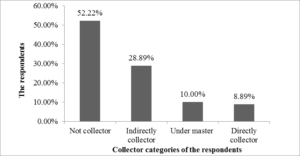
Figure 1: Collector category of the respondents.
The list of minor forest products found in Sundarbans have ranked in the following order: Fish ˃ Honey ˃ Bees Wax ˃ Golpata (Nypa fruticans) ˃ Shrimp fry ˃ Prawn ˃ Hantal (Phoenix paludosa) ˃ Golpata (Nypa fruticans) fruit ˃ Ora (Sonneratia caseolaris) ˃ Goran (Heritiera fomes) stick ˃ Fuel wood ˃ Hogla (Typha elephantina) ˃ Nal (Eriochloa procera) ˃ Crab ˃ Keora (Sonneratia apetala) fruit ˃ Medicinal plant ˃ Grass ˃ Malia (Cyperus javanicus) ˃ Molasses.
Collection of Resources Directly
From the study, it was found that a considerable portion of the respondents in the study area go to the Sundarbans and collect resources from the Sundarbans directly. The respondents who collect forest resources are trained by their guardian in traditional way although they have no institutional training. They have also sufficient equipments e.g. boat, net. axe, etc. Among the respondents, 56.67% of them directly collected fish, 43.44% respondents collected golpata (Nypa fruticans), 23.33% respondents collected fuel wood , 18.89% respondents collected shrimp fry, 14.14% respondents collected honey, 13.33% respondents collected crab, 12.12% respondents collected prawn, 8.89% respondents collected keora (Sonneratia apetala) fruit, 7.78% respondents collected medicinal plants (Acanthus ilicifolius, Aegiceras corniculatu, Brownlowia tersa, Derris trifoliat, Phoenix paludosa etc.), 6.67% respondents collected hogla (Typha elephantina), 5.56% respondents collected golpata (Nypa fruticans) fruit and ora (Sonneratia caseolaris), 3.33% respondents collected goran (Heritiera fomes) stick, 1.11% respondents collected grass, 2.22% respondents collected hantal (Phoenix paludosa) and 1.11% respondents collected molasses (Fig. 2).
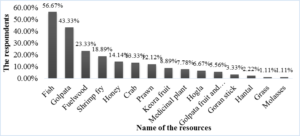
Figure 2: Percentage of the respondents based on directly collection of resource.
Collection of Resources Indirectly
From the survey in the study area it was observed that some people collect resources indirectly by renting labor or by giving loan. The people who take loan from money lender commonly known as 'Mahajon' they sold their products only by that master. The Mahajon give credit at very high interest rate for harvesting forest resources to the common poor people. They also provide boat, net and other facilities to the poor people in lieu of share of profit in the ratio 6:10 between the owner of the boat and laborer after selling of forest resources. Besides, in other way Mahajon employ laborer for harvesting forest resources on contract basis and in that case sharing of profit does not arise. Beside this, some people or Mahajon renting labor and sent them Sundarbans for forest resources harvesting on contract basis. Among the respondents, 23.33% respondents indirectly collected fish,14.44% respondents collected golpatta (Nypa fruticans), 7.77% respondents collected fuel wood , 12.12% respondents collected honey, 13.33% respondents collected shrimp fry, 5.56% respondents collected keora fruit, 18.89% collected prawn, 7.77% collected crab, 4.44% collected golpata (Nypa fruticans) fruit, 3.33% collected goran (Ceriops decandra) stick, 1.09% collected ora (Sonneratia caseolaris) and 2.22% collected grass. (Fig.3).
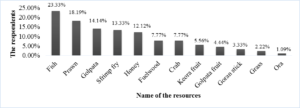
Figure 3: Percentage of the respondents based on indirectly collection of resource.
Utilization of Resources Directly
From the survey in the study area, the resources which were collected directly by the respondents have presented in figure 4. They use goran (Heritiera fomes) stick, fuel wood, hantal (Phoenix paludosa), golpata (Nypa fruticans), hogla (Typha elephantina), nal (Eriochloa procera) malia (Cyperus javanicus) for household purpose. Grasses were collected by women mainly to make mat like nal grass, malia, hogla etc. Fish, honey, crab, golpata fruits (Nypa fruticans), keora (Sonneratia apetala), ora (Sonneratia caseolaris) etc. were eaten by the respondents and sell it in the market. They collect shrimp fry to sell and get money. By surveying, it was found that, among the respondents, 56.67% of them directly use fish, 47.78% respondents use honey, 53.33% respondents use golpata, 38.89% respondents use fuel wood, 28.89% respondents use hogla, 12.22% respondents use prawn, 6.67% respondents use hantal, 3.33% respondents use crab,7.77% respondents use nal, 8.89% respondents use grass, 4.44% respondents use keora fruit, 3.33% respondents use malia,10.11% respondents use goran stick and 2.22% respondents use molasses (Fig.4).

Figure 4: Percentage of the respondents directly use of resource.
Utilization of Resources Indirectly
From survey in the study area, it was found that some resources were indirectly used by the respondents. Generally the employer person or the people who were not related to go to the Sundarban or who have no business related to minor forest products of Sundarban, they buy some products for their own purpose. They buy golpata, hantal, hogla, nal, malia etc. for their household’s purposes and fish, honey, prawn, keora fruit, golpata fruit are used for food. From the study it was found that 54.44% respondents indirectly use fish,14.44% respondents use honey, 51.11% respondents use golpata, 36.67% respondents use fuel wood, 16.67% respondents use shrimp fry, 15.55% respondents use hogla, 11.11% respondents use prawn, 5.56% respondents use hantal, 7.78% respondents use crab, 6.67% respondents use malia, 5.56% respondents use hantal, 5.55% respondents use nal, 4.44% respondents use medicinal plant, 3.33% respondents use goran stick, 2.22% respondents use keora fruit (Fig.5). The medicinal plants in the research area are Basok (Adhatoda vasica), Bahera (Terminalia belerica) , Haritaki (Terminalia chebula) , Arjun (Terminalia arjuna) , Amloki (Phyllanthus embellica) , Bel (Aeglemar melos) , Supari (Oroxylum indicum (L.) Vent), Shimul (Bombax ceiba L.) , Mehedi (Lawsonia inermis L. , kool (Ziziphus jujuba Mill) , Peyara (Psidium guajava L.) , Khejur (Phoenix sylvestris) , Tetul (Tamariandus indica) , Neem (Azadirachta indica).
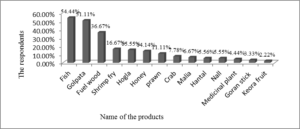
Figure 5: Percentage of the respondents indirectly use of resource.
Equipment Facility of Respondents
By surveying the respondents, it was found that 21.11% respondents have no equipment, where 31.11% respondents have equipment for collecting products from Sundarbans (Fig.6).

Figure 6: Percentage of the respondent’s equipment facilities.
Working Schedule
The working schedule of the people of Sundarbans varies with the types of work have presented in Table 2. Throughout the year they go fishing and collect the fuel wood. They usually collect honey from March to April and crab from November to February. They usually collect Nypa fruticans from December to May. They practice agriculture generally from June to August.
| Types of work | Month |
| Fishing | Whole year |
| Honey collection | March-April |
| Crab | November-February |
| Fuel wood | Whole year |
| Golpata collection | December –May |
| Agriculture | June-August |
Dependency on Sundarbans for Household Materials
From the study, it was found that most of the people were depended on the Sundarbans directly or indirectly for their livelihood. They used different materials that they found from the Sundarbans.
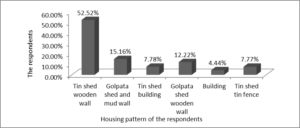
Figure 7: Percentage of respondents according to their housing pattern.
Most of the respondent's house were tin shed wooden wall (52.22%), while golpata shed and mud wall (15.16%), tin shed building (7.78%), golpata shed wooden wall (12.22%), building (4.44%) and tin shed tin fence (7.77%) were contributed the remaining part (Fig.7).
Problems Faced by the Respondents
The respondents gave their opinions about different problems were faced by them.
Physical problems
When the people of the study area go to Sundarbans to collect natural resources they faced different problems such as their body may be cut by different part of trees. But in the study area there is no medical facilities for their treatment.
Problem of securities
There are some security guards for taking care of forest resources under the Forest Range Officer, but the number of them is very few compared to their need. The security of forest resources in other way is ensured by the tigers because fear of tigers prevents access of people into the forest for harvesting of forest resources.
Problem of getting pass
The order for allotting permits for forest resources is issued from the District Forest Officer (DFO) and on the basis of DFO order Forest Range Officer (FRO) gives them permits. The also maintain close contact with the FRO for having information about permits of forest resources. The availability of permits of forest resources is less compared to the demand in general. The system of sanctioning permits on “first come first serve” basis does not work in all cases.
Credit problem
In the study area credit problem is the main problem of maximum respondents. A number of money lenders commonly known as give credit (Mahajon) at a very high rate interest for harvesting forest resources to the common poor. The share of profit ratio between the owner of the boat and laborer is 6:10, although in other way Mahajon haired laborer does not get such facilities. The respondents had given their opinion, though sharing of profit is higher for them but Mahajon took a lot of profit by various excuses. It is assumed that a Bawali gets an amount varying from Tk. 1500 to Tk. 2000 per month whereas a Mahajon earns an amount varying from Tk. 15000 to 30000 per boat. A Mahajon owns up to 50 boats engaged in harvesting of forest resources.
Problem of pirates
Robbery of pirates is very common in forest area. Each and every boat has to pay a big amount of money to the pirates for harvesting of forest resources. Sometimes, pirates rob the people and claim huge amount of money in exchange of getting them free. So, a big portion of the profit of the business of forest resources goes to the pirates in most cases.
Conclusion
The Sundarbans plays an important role in the economy of the southwestern region of Bangladesh as well as in the national economy. It is the single largest source of forest produce in the country. Various non-timber forest products in Sundarbans help to generate considerable employment and income generation opportunities for the poor coastal population. The people in the study area directly or indirectly use the minor forest products of the Sundarbans. They usually use fuel wood, honey, fish, golpata and goran stick, shrimp fry, prawn, some fruit trees, nail, hantal, hogla, grasses, malia, molasses etc. Sundarbans also provides natural protection to life and properties of the coastal population in the cyclone prone Bangladesh. Increasing trend of population growth creates increasing pressure on forest resources. So the socio-economic conditions of those people adjacent to the Sundarbans should be improved. The people adjacent to the Sundarbans have not enough knowledge about utilization of minor forest products. So it is necessary to increase their knowledge about utilization of minor forest products. If there are various ways of alternative income from the forest of sundarbans, the resources depletion rate may be reduced.
References
- Basit MA (1995) Non-wood forest products from the mangrove forests of Bangladesh. InB. Durst & A. Bishop, eds.Beyond timber: social, economic and cultural dimensions of Non-wood forest products in Asia and the Pacific. RAP Publication 1995/13. Bangkok, FAO,Regional Office for Asia and Pacific.
- BBS (2007) Bangladesh Population Census 2001. Bangladesh Bureau of Statistics; Cultural Survey report of Dacope Upazila 2007, Ministry of Planning, The Government of the People's Republic of Bangladesh, Dhaka, Bangladesh.
- Colette A (2007) Case Studies of Climate Change and World Heritage, UNESCO, Paris.1-80.
- Barbier EB, Hacker SD, Kennedy C, Koch EW, Stier AC, et al. (2011) The value of estuarine and coastal ecosystem services. Ecol Monogr 81:169-193.
- Acharya G, Koirala P, Neupane L, Devkota S (2009) Livelihood Option from Minor Forest Produce: Context of Non Timber Forest Product and Poverty Reduction in Mid Hills of Nepal, Journal of Wetlands Ecology 2:57-66.
- Helal Siddiqui ASM, Akramul MI (2019) Survivality and Growth Performance of Jarul (Lagerstroemia Speciosa L.) in the Raised Land of Less Saline Water Zone in the Sundarbans International Journal of Agriculture Innovations and Research 8:144-150.
- Khan AS (1994) Bangladesh: non-wood forest products in Asia 1-8. Bangkok, FAO, Regional Office for Asia and Pacific.
- Kanel KR (2004) Twenty five years of community forestry: contribution to millennium development goals. In: 25 years of community forestry, Proceedings of the fourth national workshop on community forestry, 4-6 August, 2004. Community Forestry Division, Department of Forest, Kathmandu, Nepal.
- Quddus A, Kamal A, Guah RK (1996) The sundarbans and the Bawalis poverty in an abundance. BARD, Comilla.
- Seidensticker J, Hai MA (1983) The Sundarbans Wildlife Management Plan: Conservation in the Bangladesh Coastal Zone.International Union for Conservation of Nature and Natural Resources.
- Shiva MP (1995) “The Centre of Minor Forest Products’ Role in Supporting NWFP Development.” In P.B. Durst and A. Bishop (eds.), Beyond Timber: Social, Economic and Cultural Dimensions of Non-Wood Forest products in Asia and the Pacific. Proceedings of a Regional Expert Consultation held in Bangkok, 28 November to 2 December 1994. FAO/RAP, Bangkok. 333-334.